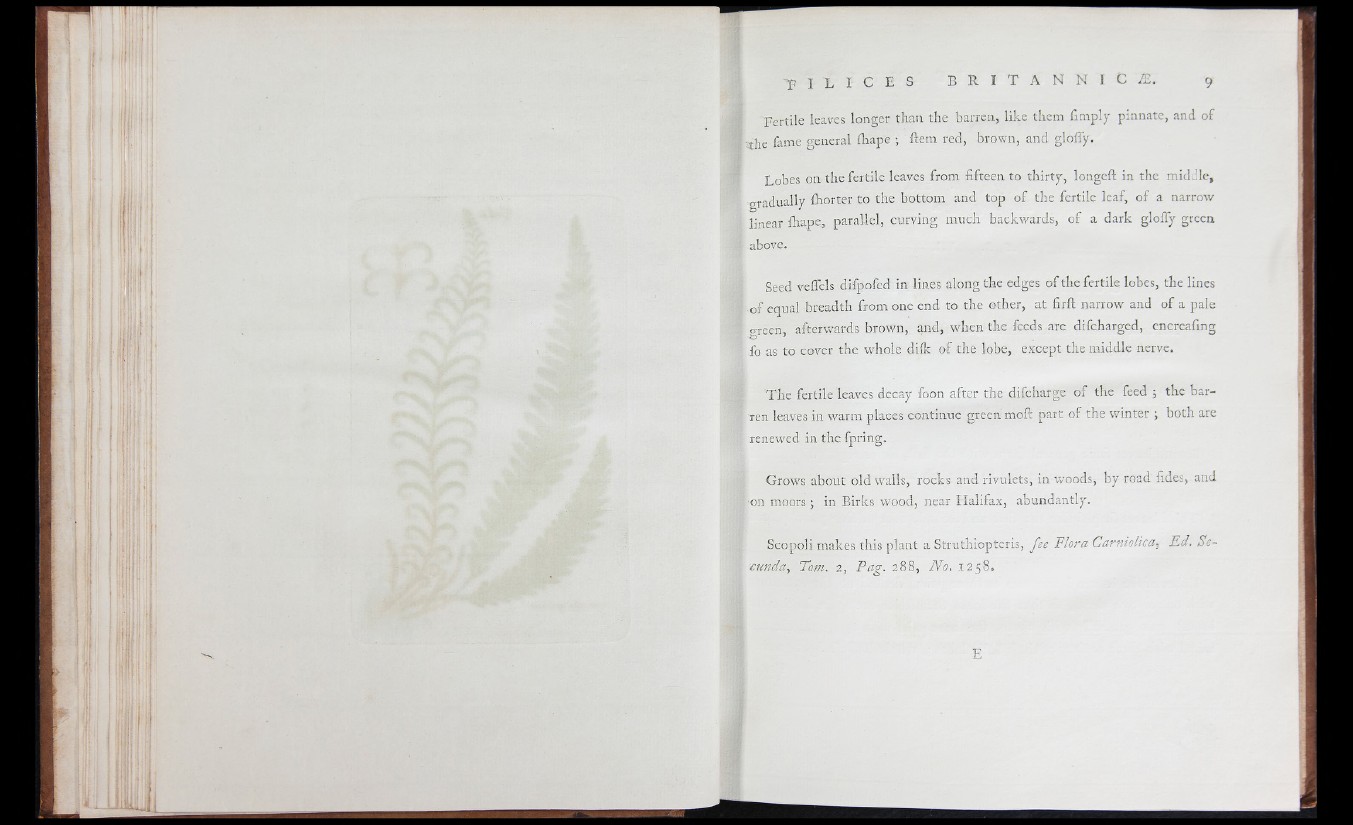
M
■I I
!'! I
1y
‘i Fertile leaves longer than the barren, like them fimply pinnate, and of
F t h e fame general flrape ; ftem red, brown, and gloffy.
' Lobes on the fertile leaves from fifteen to thirty, longeft in the middle,
gradually fhorter to the bottom and top of the fertile leaf, of a narrow
linear ihape, parallel, curving much backwards, of a dark gloffy green
above.
Seed veffels difpofed in lines along the edges of the fertile lobes, the lines
of equal breadth from one end to the other, at firft narrow and of a pale
o-rcen, afterw-ards brown, and, when the feeds are difchargcd, cncreafing
fo as to cover the whole diik of the lobe, except the middle nerve.
The fertile leaves decay foon after the difcharge of the feed ; the barren
leaves in warm places continue green mofc part of the v/inter ; both arc
renewed in the fpring.
Grows about old wails, rocks and rivulets, in woods, by road fides, and
on moors; in Birks wood, near Halifax, abundantly.
Scopoli makes this plant a Struthioptcris, fee Flora Carniolica, E d . Se-
ciinda, Tom. 2, Pag. 288, No. 12 5 8 .